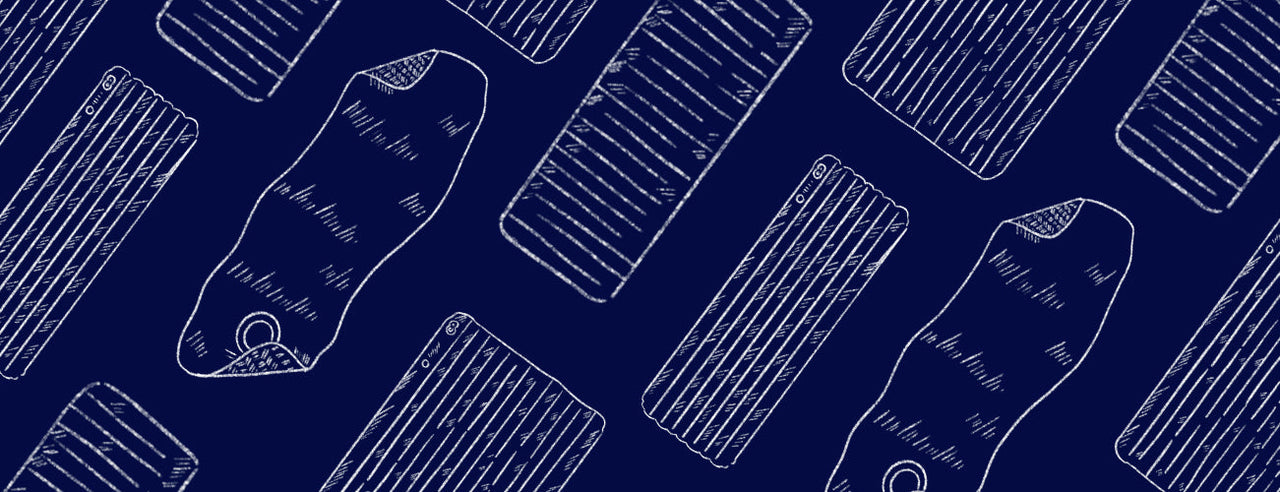Sleep slightly above the dirt.
Protecting Your Sleeping Pad
Your pad is covered by our warranty against manufacturing and material defects. However, it is not covered for damage caused by exposure to the elements. If you're camping without a tent, it's best to place a protective layer (like a footprint) under your pad and be used for many warm comfortable siestas. Your pad is not intended for glissading, Jet-Boiling, or rafting.
Setting Up Your Big Agnes System Bag & Pad
Our System Bags combine a sleeping bag and pad into one seamless setup. To use it, simply inflate the pad, lay your sleeping bag on top and attach the corners as you would with a fitted bedsheet. Once the corners are attached, cinch the cord to tighten it.
Note: Certain Big Agnes System sleeping bags don’t include insulation between the bag and the pad because insulation works best when it’s not compressed. This design reduces weight and bulk while ensuring comfort. To stay warm and keep the sleeping bag rating, pair your sleeping bag with an appropriately insulated sleeping pad.
Managing Your Pad's Inflation Level
When you first inflate your sleeping pad, the air inside will be warm. As temperatures drop overnight, the air inside your pad cools and contracts, which may cause the pad to feel less inflated. This is normal – just add a few more breaths to restore firmness.
On the flip side, if you leave your pad inflated in hot weather, the air inside may expand. This can cause the pad to burst if left unchecked. To avoid this, release a bit of air before leaving it inflated in the heat.
Using the Included Inflation Sack
The pad inflation sacks save you time and effort by gathering large amounts of air and pushing it into your pad through the inflation valve. This method is faster and helps prevent moisture from your breath from entering the pad, which can lead to mold. This is included with the purchase of all air chamber sleeping bags.
Instructions:
-
Open the valve and snap the pad inflation sack valve onto the pad “in” valve.
-
Open the sack end and let air enter. The goal is to get as much air as possible into your inflation sack. To do this, blow into the inflation sack from a distance and collect as much air as possible in the sack. This works best if you hold the opening of the inflation sack about a foot away from your face.
-
Roll the sack’s end tightly to push air into the pad. Repeat until the desired inflation level is reached.
-
Detach the inflation sack valve from the pad and close your sleeping pad valve.
Deflating And Packing Your Pad
Your pad comes from the factory tightly rolled and in its own stuff sack, and that's the best way to pack and store it all the time! However, that can be easier said than done. To store your pad properly, follow these steps:
-
Lay It Out
Unroll your pad on a flat surface and let the air out by opening the OUT valve (for 2-valve pads), using the keyed tab (for 1-valve pads and pillows), or removing the plug completely (for self-inflating pads). Applying body weight can help speed up deflation.
Pro Tip: If you’re near a picnic table, it’s a great place to deflate your pad without bending over, plus it helps keep your pad clean.
-
Fold Your Pad
Fold the pad in thirds (for Air Chamber pads) or in half (for Self-inflating pads) lengthwise.
-
Roll, Don’t Stuff
After folding, tightly roll your pad from the bottom up, towards the valve. Avoid stuffing it into the stuff sack, as this may damage both the pad and the sack.
-
Pack It In
If rolled tightly, your pad should easily fit into the stuff sack. If not, repeat the deflation and rolling process until it fits snugly. Once packed, close the sack and you’re ready to hit the trail!


 English (EUR) | EN
English (EUR) | EN 